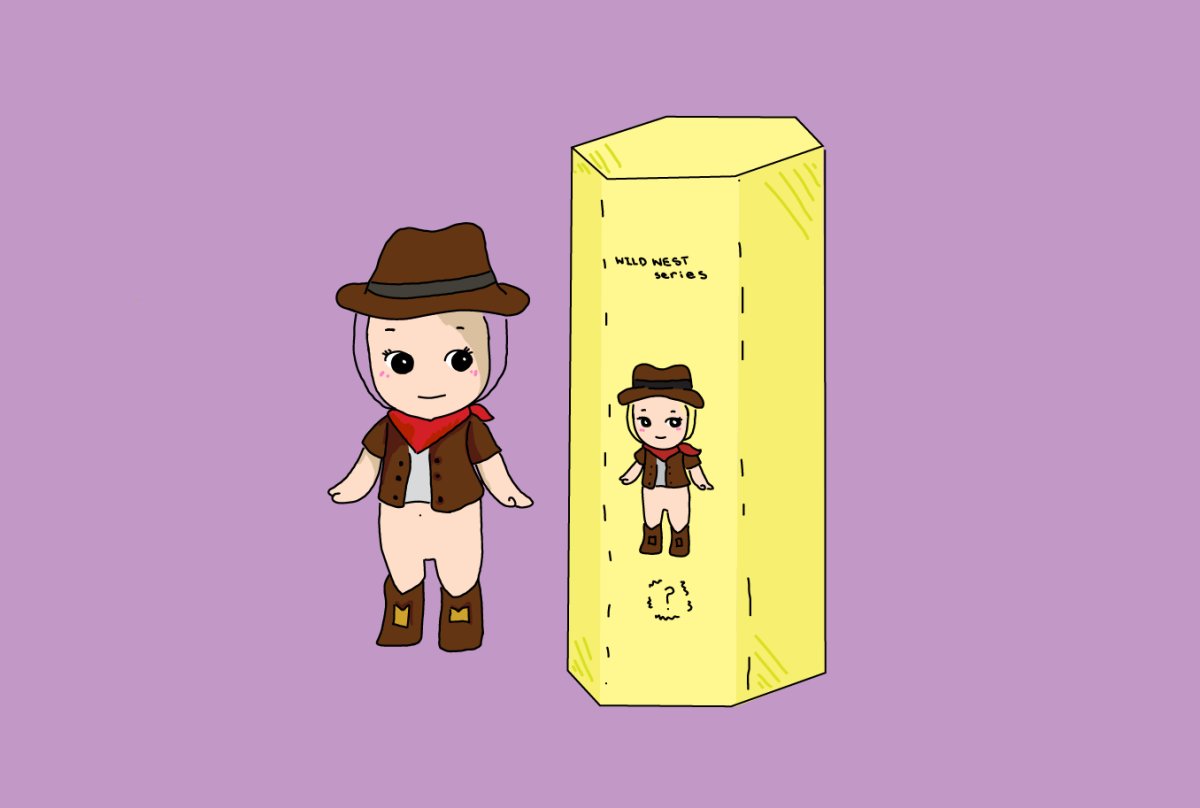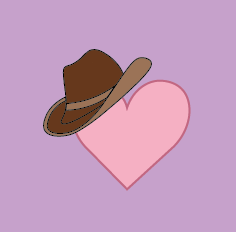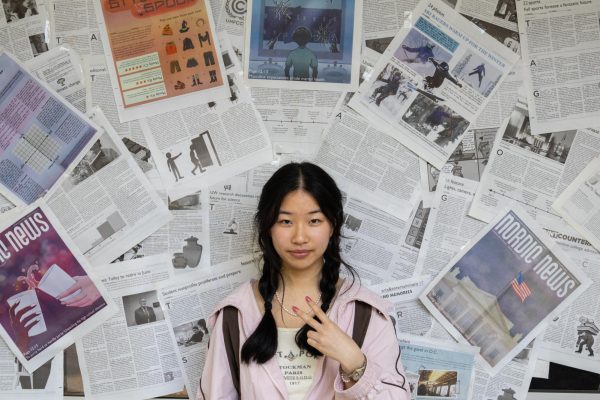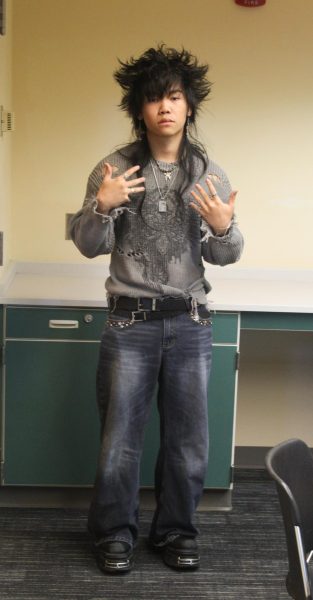
The clothing racks of many Seattle boutique clothing stores, thrift stores and Value Villages are where senior Dylan Dao (he/him) gets a lot of his clothes, and he doesn’t restrict himself to a certain identity or style.
“I just say I’m alt (alternative),” Dao said. “There’s a lot of jargon out there, and it’s really confusing when I just dress what I like to dress.”
Similarly, senior Joshua Zhong (he/him) said he discovered his style of fashion and what worked best for him by trying out different clothes and trends. Still, when it comes to men’s fashion, Zhong said that variety and availability can be limited.
“It’s not the most easily accessible,” Zhong said. “The example of the mall, most of the time (the stores) are just trend riding, which can get you to a certain point in finding style, but once you start to discover your own things, then it gets harder to find what you actually like.”
Dao said there are a lot more options for women’s clothing than men’s clothing. He said that he dresses androgynously and believes that it’s pointless to put labels on clothes. Dao has bought clothes from the women’s section before, believing that the judgmental view of wearing the opposite gender’s clothing can be constraining.
“I think that seeing something like, ‘oh, this is going to make me look really feminine. This is going to make me look really masculine,’ it’s just really limiting, and I don’t think that people should be trying to think that way,” Dao said. “If the fit is fire, the fit is fire.”
Zhong said the social expectations surrounding masculinity often discourage people from buying clothes in the women’s section. He said it’s fine for men to shop in the women’s section, especially if the sizing is better.
“At the end of the day, people just have to get over themselves and get over that.,” Zhong said. “Just understand that fashion is fashion, and if I’m buying a thrifted woman’s jacket, no one’s going to be able to tell. So it shouldn’t matter.”
Dao said guys often struggle with wearing more feminine-style clothing. He said femininity and masculinity are constructs, and while he personally wouldn’t wear a dress because he doesn’t think it would suit him, Dao believes clothing shouldn’t be limited by gender labels.
“Pink is really hard to style, but also, you never often see those sorts of colors on guys,”
Dao said. “There are dresses and skirts. Personally, not my thing, but guys who want to wear those, they usually can.”
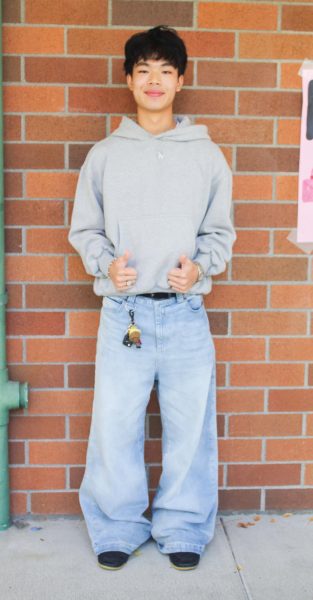
Zhong said that while people should wear whatever makes them comfortable and experiment with different styles, support for each other in fashion can be mixed.
“It’s kind of a double-edged sword,” Zhong said. “Walking through the school, getting compliments — there are just random people that are very uplifting. I think that’s awesome, but there’s also the other end of the stick, where I know people personally, they’re also super judgmental of what other people wear and stuff like that. I think that side is toxic.”
Dao said he is an artistic person and he likes to wear expressive clothing, garnering him more recognition by others. As he’s ventured further into his fashion journey, he’s gained noticeably more attention — both positive and negative.
“I’ve definitely gotten way more compliments over the years versus when I didn’t really pay attention to how I dress,” Dao said. “So there’s a good and there’s bad, but I’ve also heard people trash talking before, so there’s the bad, you know? But again, I’ve accepted that.”
While Dao said he is a proponent of expressing oneself openly, he also recognizes the potential criticism that comes from doing so.
“Unfortunately, being too expressive, you’re going to get some hate,” Dao said. “It’s like, what do you prefer? What kind of exposure are you okay with subjecting yourself to?”




